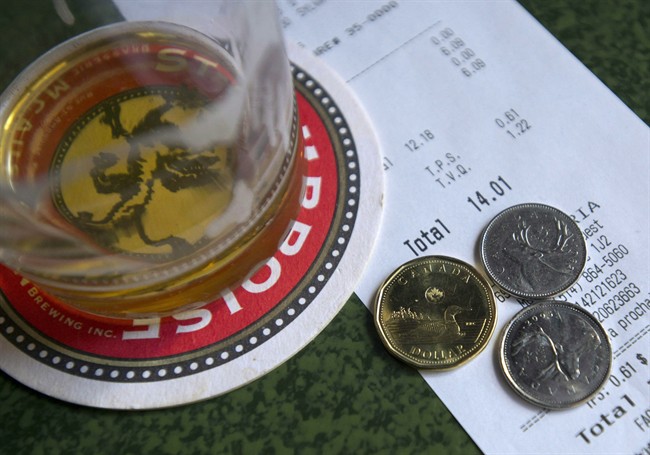When Alexander Koury took his cats to get groomed a few weeks ago, he got a bit of a shock at the checkout counter.

The Phoenix financial planner brought his five-year-old orange tabbies Frankie and Scotch in for bathing, clipping and shaving, which cost $150. But then the payment system asked whether he wanted to tack on a healthy tip: either 20, 25 or 30 per cent.
“Ridiculous,” says Koury, 36, who says it was not explained to him why he needed to tip, or whom. He was so irked, in fact, that he ended up giving no tip at all.
Traditionally, many consumers have rewarded tip-worthy service when the spirit moves them, and within a certain range: 10 per cent is on the low side, 15 is fairly standard, and 20 is seen as generous.
But with the advent of pre-calculated tipping options, and apps like Square that allow businesses to customize payment screens, consumers are prompted for tips in unfamiliar circumstances. Options in the 20-25-30 per cent range pop up with increasing frequency.
Welcome to the phenomenon of ‘tip inflation’.
Recent data from Square, a popular mobile payments app led by Twitter co-founder Jack Dorsey, reveals that tip encouragement seems to be working; the average tip for taxis last year was 16.54 per cent, in the food and beverage sector it was 17.05 per cent, and in salons it was 18.55 per cent. In a previous analysis, Square users reported that from 2013 to 2014, customers tipped 35 per cent more frequently.
It should be noted that Square’s default settings for amounts over $10 are “No tip, 15 per cent, 20 per cent, 25 per cent.” So if you are seeing tip options of 20, 25 and 30 per cent, that has been customized by the business owner.
WATCH: Should tipping be eliminated altogether?
“Don’t fall for it!” says New York financial planner David Mendels.
“Twenty percent is a generous tip, and if I don’t give more than that, it doesn’t make me a miser. If they suggest more, it makes them greedy and unprofessional. That is reason enough to knock it down to 15 per cent.”
The bottom line is business owners have every right to ask for whatever tip they deem appropriate. And you, in turn, have every right to say “no.”
“Would you voluntarily pay a higher amount for anything just because you were given the option to do so?” asks Edward Vargo, a financial adviser in Westlake, Ohio. “I would simply ignore anything above 20 per cent, unless you feel you have received really exceptional service.”
When ultra-generous tip options are waved in customers’ faces, it can feel very much like “tip shaming.” Rather than appearing miserly to the service employee, people often just tap one of the available options and swallow the additional cost.
So how can consumers make a snap decision that is appropriate for them? It may seem like a straightforward transaction, but there are actually many factors packed into that one decision, advises etiquette expert Diane Gottsman, author of Modern Etiquette for a Better Life and founder of the Protocol School of Texas.
She says you should ask:
- What can you afford?
- Was the service above-and-beyond in any way?
- And is the service professional largely dependent on those tips for their income?
“You decide what you tip, and you should not feel pressured by the app,” says Gottsman. “So go with your feelings, but please tip fairly.”
And if you are feeling guilty about not agreeing to a lavish tip? Financial planner Vargo has some simple advice: “Get over it.”
Editing by Beth Pinsker and Dan Grebler
- Budget 2024 failed to spark ‘political reboot’ for Liberals, polling suggests
- Train goes up in flames while rolling through London, Ont. Here’s what we know
- Peel police chief met Sri Lankan officer a court says ‘participated’ in torture
- Wrong remains sent to ‘exhausted’ Canadian family after death on Cuba vacation



Comments